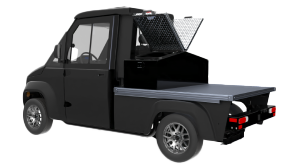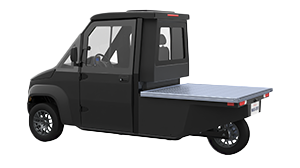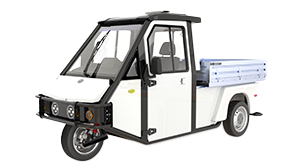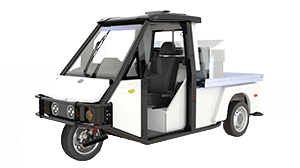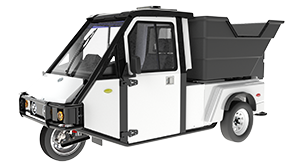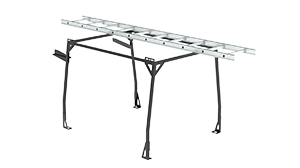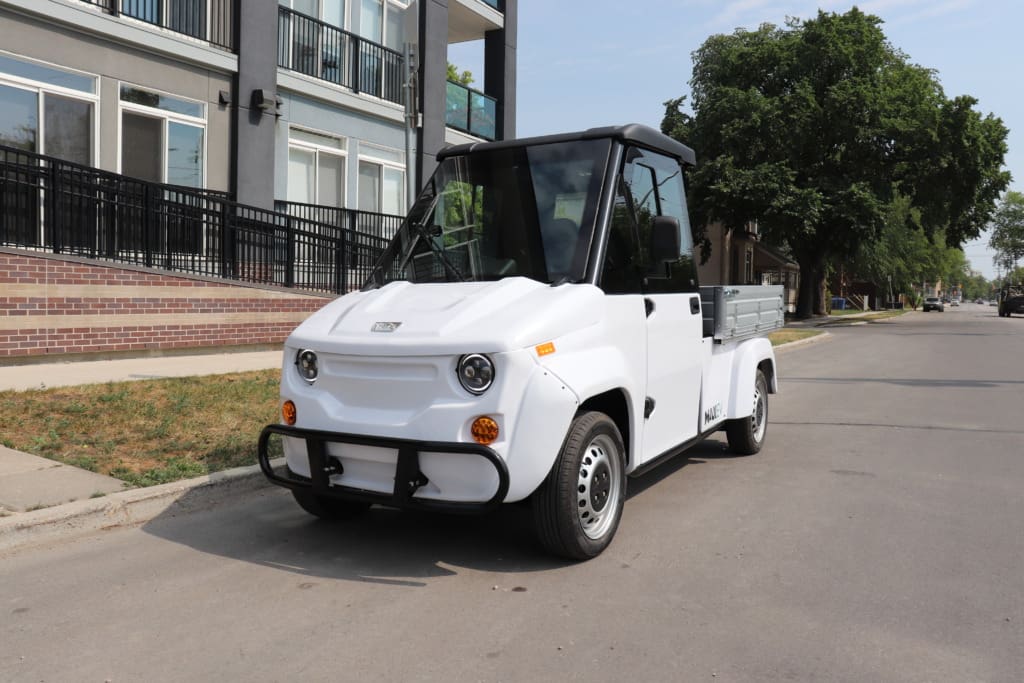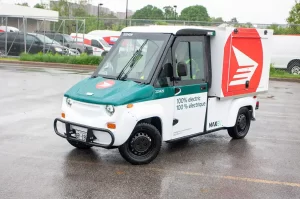Maintaining your Westward Vehicles electric vehicle (EV) goes beyond the typical maintenance routines of traditional vehicles. Embracing eco-friendly maintenance not only ensures the longevity and performance of your EV but also aligns with sustainable practices that reduce environmental impact. While the focus on battery care and software updates is common, there is a deeper layer of maintenance practices that many experts overlook.
Understanding the Basics of EV Maintenance
Electric vehicles (EVs) like those produced by Westward require a unique approach to maintenance, distinct from traditional internal combustion engine (ICE) vehicles. Understanding these differences is crucial for maximizing performance and longevity.
What Sets EV Maintenance Apart?
While EVs have fewer moving parts than ICE vehicles, their maintenance needs are specialized:
- Battery Management: The heart of any EV is its battery. Proper battery management, including regular monitoring of state of charge and temperature, is essential. Overcharging or exposing the battery to extreme temperatures can significantly reduce its lifespan. The Westward on board BMS system regulates all needed conditions for long term battery health.
- Regenerative Braking Systems: Unlike traditional brakes, regenerative braking systems convert kinetic energy back into stored energy in the battery. This system requires regular software updates and inspections to ensure it operates efficiently.
- Cooling Systems: EVs often utilize air cooling systems to maintain battery temperature. Regular checks and eco-friendly coolant replacements are necessary to prevent overheating and extend battery life.
- Battery heating systems: In late 2024 Westward will be launching a new battery supply partnership providing standard battery heating technology.
The Role of Preventative Maintenance
Preventative maintenance is a proactive approach that can prevent costly repairs and extend the life of your EV:
- Regular Software Updates: Keeping the vehicle’s software updated can improve battery efficiency, enhance performance, and introduce new features that optimize overall functionality.
- Inspection of High-Voltage Cables: These cables are critical for the transfer of power from the battery to the motor. Regular inspections ensure there are no damages or wear that could compromise safety and efficiency.
- Tire Maintenance: Proper tire inflation and alignment are crucial for EVs, as they impact energy consumption and overall vehicle performance. Additionally, choosing eco-friendly tires can reduce rolling resistance and improve efficiency.
Incorporating these unique aspects of EV maintenance into your routine ensures that your electric vehicle remains in peak condition, providing reliable service while adhering to sustainable practices. By focusing on the specific needs of EV components, you not only enhance the performance and lifespan of your vehicle but also contribute to a greener environment.
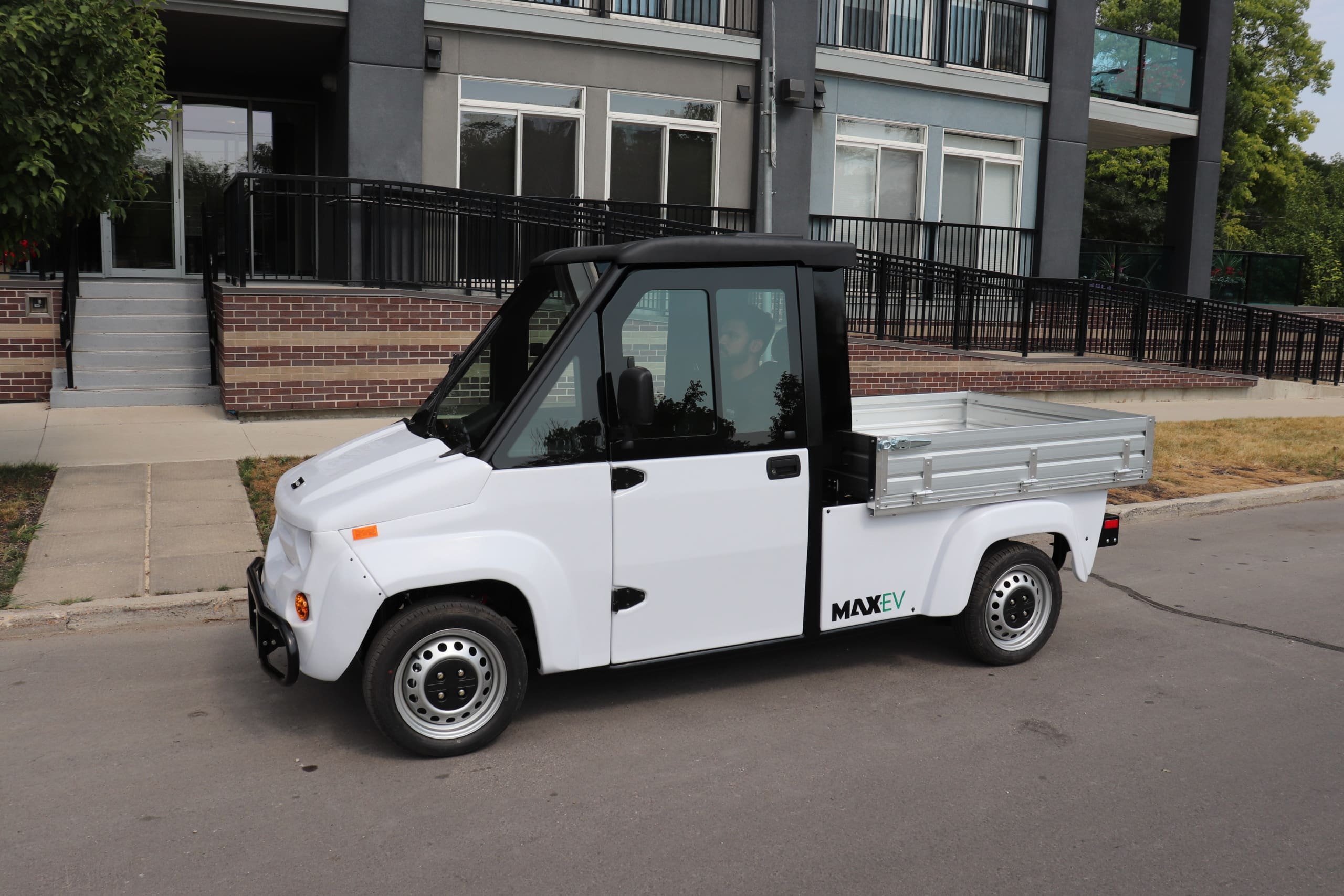
Eco-Friendly Maintenance Practices
Maintaining your Westward EV in an eco-friendly manner requires a holistic approach that goes beyond the basics. Implementing these practices ensures that your vehicle remains efficient and sustainable throughout its lifespan.
Using Eco-Friendly Cleaning Products
Traditional cleaning products often contain harmful chemicals that can damage the environment. Switching to biodegradable and non-toxic cleaning agents is an effective way to maintain your vehicle while reducing your ecological footprint.
- Biodegradable Soaps: Opt for biodegradable car soaps that break down naturally and don’t pollute waterways.
- Non-Toxic Interior Cleaners: Use plant-based or non-toxic cleaners for the interior to avoid releasing harmful VOCs (volatile organic compounds).
- Reusable Cleaning Tools: Employ reusable microfiber cloths and washable cleaning pads to reduce waste.
Efficient Battery Care and Management
Proper battery maintenance is crucial for the longevity and performance of your EV. Focus on practices that extend battery life and minimize environmental impact.
- Optimal Charging Habits: Avoid charging the battery to 100% or letting it drop below 20%. This practice can prolong battery health.
- Temperature Control: Keep the battery within its optimal temperature range to prevent degradation. Use climate-controlled storage if possible.
- Renewable Energy Sources: Whenever possible, charge your vehicle using renewable energy sources like solar or wind power to further reduce your carbon footprint.
Sustainable Tire Maintenance
Tire maintenance plays a significant role in the overall efficiency and environmental impact of your EV. Implementing eco-friendly practices can make a substantial difference.
- Proper Inflation: Maintain correct tire pressure to improve fuel efficiency and extend tire life.
- Eco-Friendly Tires: Invest in low rolling resistance tires that are designed to improve efficiency and reduce emissions.
- Recycling and Disposal: Ensure that old tires are disposed of or recycled properly to minimize environmental harm.
Green Fluids and Lubricants
Using environmentally safe fluids and lubricants helps in maintaining your vehicle’s components without causing harm to the environment.
- Eco-Friendly Coolants: Choose non-toxic, biodegradable coolants that provide effective temperature regulation without the environmental hazards.
- Sustainable Lubricants: Use plant-based or synthetic lubricants that have a lower environmental impact compared to conventional petroleum-based options.
- Proper Disposal: Always dispose of used fluids and lubricants through certified recycling programs to prevent contamination.
Regular Software Updates
Keeping your vehicle’s software updated is not only crucial for performance but also for energy efficiency.
- Enhanced Features: Software updates often include features that improve battery management and overall efficiency.
- Security Enhancements: Regular updates also ensure that your vehicle’s systems are protected from vulnerabilities, maintaining safe and efficient operation.
Energy-Efficient Driving Techniques
Adopting energy-efficient driving habits can significantly reduce the environmental impact of your EV.
- Smooth Acceleration and Deceleration: Avoid rapid acceleration and harsh braking to conserve energy.
- Regenerative Braking: Utilize regenerative braking to recover and store energy that would otherwise be lost.
- Eco Mode: Whenever possible, drive in Eco mode to optimize the vehicle’s energy consumption.
Routine Inspections and Tune-Ups
Regular inspections and tune-ups are essential to catch potential issues early and maintain optimal vehicle performance.
- Periodic Check-Ups: Schedule regular check-ups with certified technicians who are experienced with EVs.
- Component Inspections: Regularly inspect critical components such as the battery, motor, and high-voltage cables to ensure they are functioning correctly.
- Proactive Repairs: Address any issues promptly to prevent minor problems from becoming major, costly repairs.
By incorporating these eco-friendly maintenance practices, you can ensure that your EV remains in top condition while also contributing to environmental sustainability. These unique approaches not only enhance the performance and longevity of your vehicle but also reflect a commitment to greener, more responsible vehicle ownership.
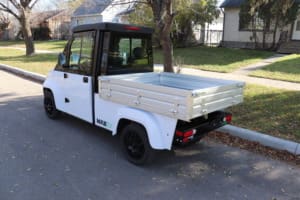
Optimizing Vehicle Performance
Optimizing the performance of your EV requires more than just standard maintenance. By integrating advanced and eco-friendly practices, you can ensure your vehicle operates at peak efficiency while reducing its environmental impact. These strategies, often overlooked by industry experts, offer innovative ways to maintain and enhance your EV’s performance.
Regular Software Updates
Keeping your EV’s software up-to-date is crucial for maintaining optimal performance and efficiency. Modern EVs rely heavily on software to manage everything from battery health to energy consumption.
- Performance Enhancements: Software updates can improve the efficiency of energy use, enhancing overall vehicle performance.
- New Features: Manufacturers often release updates that add new functionalities or optimize existing ones, ensuring your EV remains at the cutting edge of technology.
- Bug Fixes and Security: Regular updates address any bugs or security vulnerabilities, ensuring the vehicle operates safely and efficiently.
Energy-Efficient Driving Techniques
Adopting energy-efficient driving habits can significantly extend the range and life of your EV while reducing energy consumption.
- Smooth Acceleration and Deceleration: Gentle acceleration and deceleration reduce the strain on the battery and improve energy efficiency.
- Consistent Speeds: Maintaining a steady speed whenever possible can help conserve energy.
- Regenerative Braking: Maximizing the use of regenerative braking recaptures energy that would otherwise be lost, extending the range of your EV.
Routine Inspections and Tune-Ups
Regular inspections and tune-ups are essential for identifying and addressing potential issues before they become serious problems.
- Scheduled Maintenance: Adhering to a regular maintenance schedule ensures that all vehicle components are checked and serviced regularly.
- High-Voltage System Checks: Inspect the high-voltage cables and connections to ensure they are in good condition and functioning properly.
- Battery Health Monitoring: Regularly monitor the state of the battery to catch any signs of degradation early.
Efficient Battery Care and Management
Effective battery management is critical for maintaining the performance and longevity of your EV.
- Optimal Charging Practices: Avoid charging to 100% or letting the battery drop below 20% to prevent accelerated wear.
- Thermal Management: Ensure that the battery operates within its optimal temperature range, using climate-controlled environments if necessary.
- Renewable Charging Sources: Using renewable energy sources for charging can reduce your vehicle’s overall environmental footprint.
Aerodynamic Efficiency
Improving the aerodynamic efficiency of your EV can significantly enhance its performance, especially at higher speeds.
- Streamlined Accessories: Choose accessories that do not compromise the vehicle’s aerodynamic profile.
- Regular Cleaning: Keep the vehicle clean to reduce drag caused by dirt and debris.
- Tire Maintenance: Properly inflated and aligned tires can reduce rolling resistance and improve overall efficiency.
Weight Management
Managing the weight of your EV is another critical factor in optimizing performance.
- Avoid Unnecessary Load: Remove any unnecessary items from the vehicle to reduce weight and improve energy efficiency.
- Lightweight Materials: Consider using lightweight materials for any modifications or repairs to maintain an optimal weight balance.
By implementing these advanced strategies, you can ensure that your Westward EV operates at peak performance while adhering to eco-friendly principles. These practices, though often overlooked, can make a significant difference in the efficiency and longevity of your electric vehicle, providing both economic and environmental benefits.
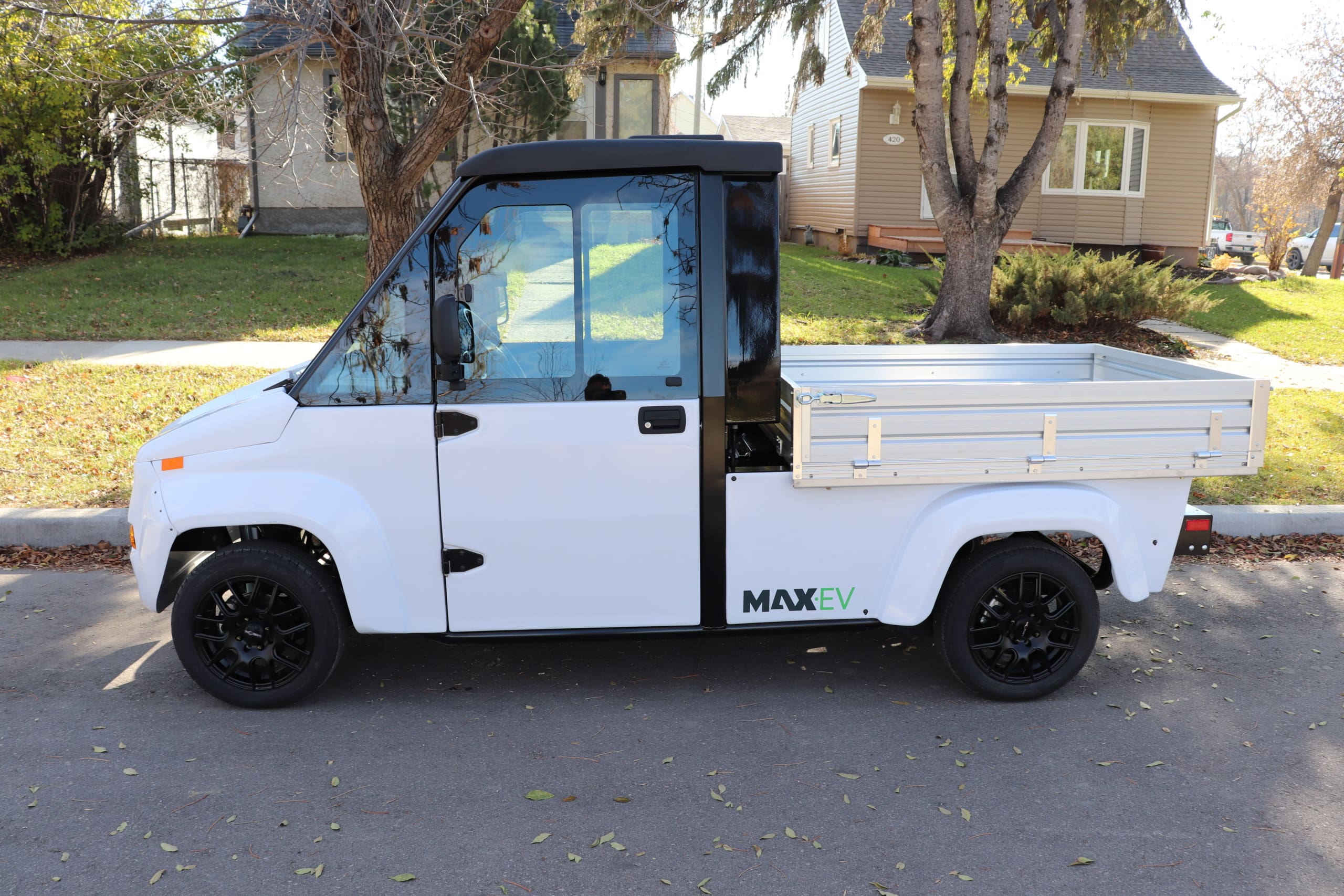
Recycling and Disposal of EV Components
Proper recycling and disposal of electric vehicle (EV) components are crucial for minimizing environmental impact and promoting sustainability. While many focus on the performance and efficiency of EVs, the end-of-life phase of these vehicles is equally important. Effective recycling practices can prevent harmful materials from polluting the environment and allow for the recovery of valuable resources.
Battery Recycling Programs
The battery is one of the most critical components of an EV, and its disposal requires special attention.
- Specialized Recycling Facilities: EV batteries contain materials such as lithium, cobalt, and nickel, which can be harmful if not disposed of correctly. Specialized facilities are equipped to handle these materials safely.
- Second-Life Applications: Before recycling, consider second-life applications for EV batteries. These batteries can be repurposed for energy storage systems, providing value even after their automotive life has ended.
- Industry Partnerships: Partner with companies that specialize in battery recycling to ensure that your vehicle’s batteries are disposed of in an environmentally friendly manner.
Disposal of Other Components
Beyond the battery, other components of an EV also require responsible disposal practices.
- Tire Recycling: Used tires can be recycled into a variety of products, including rubberized asphalt for road construction, playground surfaces, and new tires. Ensure your tires are recycled through certified programs to reduce landfill waste.
- Fluids and Lubricants: Fluids and lubricants used in EVs should be disposed of through hazardous waste programs to prevent environmental contamination. Many local waste management services offer specialized collection for automotive fluids.
- Electronic Components: EVs contain numerous electronic components that can be harmful if discarded improperly. Partner with e-waste recycling programs to ensure these parts are processed correctly.
Reuse and Repurposing
Consider opportunities for reusing and repurposing EV components before opting for disposal.
- Parts Harvesting: Functional components such as electric motors, inverters, and controllers can be harvested and reused in other applications, extending their life and reducing waste.
- Donations and Resale: Donate or sell usable parts to organizations or individuals who can repurpose them, fostering a circular economy.
Compliance with Regulations
Adhering to local, state, and federal regulations is essential when disposing of EV components.
- Environmental Standards: Ensure that all disposal practices comply with environmental standards and regulations to avoid legal repercussions and contribute to broader sustainability goals.
- Documentation and Reporting: Maintain records of all recycling and disposal activities to ensure transparency and accountability. Proper documentation can also assist in tracking the environmental impact of your disposal practices.
Innovative Recycling Technologies
Stay informed about emerging technologies that improve the efficiency and effectiveness of EV component recycling.
- Advanced Separation Techniques: New methods for separating valuable materials from EV batteries and other components are continually being developed, enhancing the recovery rate and reducing waste.
- Biodegradable Materials: Research into biodegradable materials for use in EV manufacturing is ongoing. These materials can simplify the recycling process and further reduce environmental impact.
By adopting comprehensive recycling and disposal practices, you can ensure that your Westward Vehicles EV not only performs efficiently during its operational life but also contributes to environmental sustainability at the end of its lifecycle. These practices, though often overlooked, play a vital role in the broader effort to create a sustainable future for electric vehicles.
Conclusion
Embracing eco-friendly maintenance for your Westward EV ensures optimal performance and a reduced environmental footprint. By using biodegradable cleaning products, practicing efficient battery care, and maintaining sustainable tire practices, you extend your vehicle’s life while promoting sustainability. Regular software updates and energy-efficient driving techniques further enhance performance. Adopting these holistic, forward-thinking strategies not only supports your vehicle’s longevity but also aligns with global efforts toward greener transportation solutions, contributing to a healthier planet.
FAQ
What are the best practices for eco-friendly battery maintenance in EVs?
For eco-friendly battery maintenance, avoid strictly opportunity-charging your EV battery to, or frequently letting it drop below 20%. Allow your battery to charge over a weekend allowing the BMS system to balance high and low cells. Use renewable energy sources like solar or wind power for charging whenever possible. Maintain the battery within its optimal temperature range to prevent degradation, and ensure regular software updates to improve battery management and efficiency.
How can I ensure that the cleaning products I use are eco-friendly?
Look for cleaning products labeled as biodegradable and non-toxic. These products break down naturally and do not contain harmful chemicals that can damage the environment. For interior cleaning, choose plant-based or non-toxic cleaners to avoid releasing volatile organic compounds (VOCs).
What should I do with old EV tires to minimize environmental impact?
To minimize environmental impact, ensure that old EV tires are recycled through certified programs. Recycled tires can be used to produce rubberized asphalt, playground surfaces, and new tires. Maintaining proper tire inflation and alignment also prolongs tire life, reducing the frequency of replacements.
Why is it important to keep my EV’s software updated?
Keeping your EV’s software updated is crucial for maintaining optimal performance and energy efficiency. Software updates can introduce new features, enhance battery management, fix bugs, and address security vulnerabilities. Regular updates ensure that your vehicle operates safely and efficiently.
How can I dispose of EV fluids and lubricants in an eco-friendly way?
Dispose of EV fluids and lubricants through hazardous waste programs to prevent environmental contamination. Many local waste management services offer specialized collection for automotive fluids. Choose eco-friendly, biodegradable fluids and lubricants to reduce environmental impact from the start.

